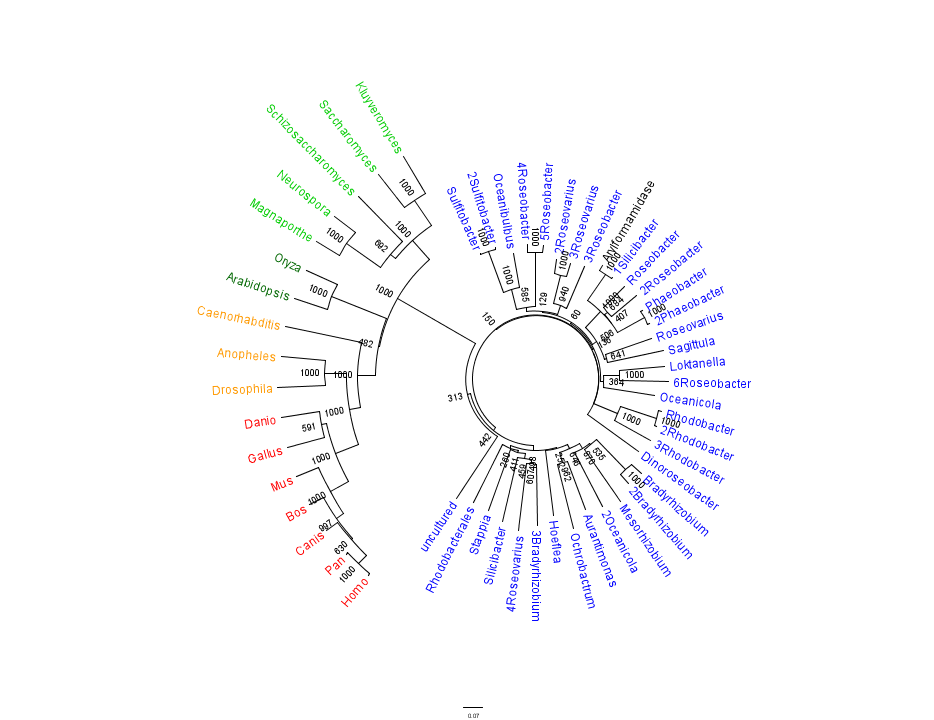Arylformamidase Sequence & Homology: Difference between revisions
No edit summary |
No edit summary |
||
| Line 2: | Line 2: | ||
Using the query sequence pdb:2pbl "Arylformamidase", a BLAST search was performed using a non-redundant database. The top scoring matches to an E-value of 3e-054, 35 sequences in total, were selected. Eukaryotic homologous sequences sequences were found using HOMOLOGENE. These were appended to the list and a multple sequece alignment was performed using CLUSTAL X. | |||
The data output from the multiple sequence alignment was bootstrapped 100 times and a phylogenetic tree was created using the neighbour-joining method. The program FigTree was used to create the visual representation of this tree. | The data output from the multiple sequence alignment was bootstrapped 100 times and a phylogenetic tree was created using the neighbour-joining method. The program FigTree was used to create the visual representation of this tree(Figure 1). | ||
Figure 1. | |||
[[Image:NewBOOTtree2.png]] | [[Image:NewBOOTtree2.png]] | ||
Unrooted phylogenetic tree of highest scoring results from a BLAST search of bacterial sequnces using a non-redundant database and homologous eukaryotic sequences sourced from HOMOLOGENE: | Unrooted phylogenetic tree of highest scoring results from a BLAST search of bacterial sequnces using a non-redundant database and homologous eukaryotic sequences sourced from HOMOLOGENE: | ||
== Results == | |||
The alignment revealed several conserved regions accross all species, thereby indicating a high level of conservation from Bacteria through Eukaryota. These included vertebrates, invertebrates, plants and single-celled eukaryotes. | |||
Revision as of 07:41, 28 May 2008
Method
Using the query sequence pdb:2pbl "Arylformamidase", a BLAST search was performed using a non-redundant database. The top scoring matches to an E-value of 3e-054, 35 sequences in total, were selected. Eukaryotic homologous sequences sequences were found using HOMOLOGENE. These were appended to the list and a multple sequece alignment was performed using CLUSTAL X.
The data output from the multiple sequence alignment was bootstrapped 100 times and a phylogenetic tree was created using the neighbour-joining method. The program FigTree was used to create the visual representation of this tree(Figure 1).
Figure 1.
Unrooted phylogenetic tree of highest scoring results from a BLAST search of bacterial sequnces using a non-redundant database and homologous eukaryotic sequences sourced from HOMOLOGENE:
Results
The alignment revealed several conserved regions accross all species, thereby indicating a high level of conservation from Bacteria through Eukaryota. These included vertebrates, invertebrates, plants and single-celled eukaryotes.
